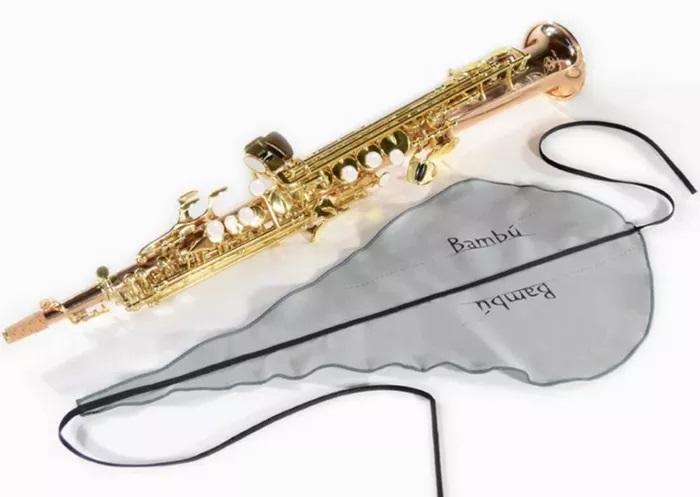How to Clean a Soprano Saxophone: Complete Care Guide

The soprano saxophone is a beautifully crafted and delicate instrument that requires regular maintenance to ensure its performance remains top-notch. Unlike other types of saxophones, such as the alto or tenor, the soprano saxophone’s straight or slightly curved body presents unique cleaning challenges. Regular cleaning is not just a matter of hygiene—it helps preserve the quality of tone, prolongs the life of the instrument, and prevents damage caused by moisture and debris build-up.
Why Cleaning Your Soprano Saxophone Is Essential
Keeping your soprano saxophone clean is about more than just looks. Internal moisture from your breath, residue from reeds, and oils from your hands can all contribute to corrosion and wear. Regular cleaning also prevents sticky pads, mold growth, and bacterial contamination, all of which can affect playability and sound.
Benefits of Regular Cleaning
Maintains tone quality and resonance
Prevents corrosion of the inner bore and keywork
Extends the lifespan of pads and corks
Improves hygiene and reduces bad odors
Avoids costly repairs caused by neglect
Tools and Materials You Will Need
Before beginning the cleaning process, make sure you have all the right tools and supplies on hand:
Swab (specifically for soprano saxophone)
Pad paper
Cork grease
Key oil
Soft microfiber cloths
Mouthpiece brush
Q-tips or pipe cleaners
Isopropyl alcohol (70% or higher)
Latex or nitrile gloves (optional)
Understanding the Anatomy of the Soprano Saxophone
To clean a soprano saxophone effectively, it’s crucial to understand its parts:
Mouthpiece: Where the sound begins, includes the reed and ligature.
Neck: May be detachable or built-in, depending on the model.
Body: Contains the tone holes, rods, and keys.
Pads: Cover tone holes and are sensitive to moisture.
Keys: Mechanisms that open/close the pads, operated by your fingers.
Step-by-Step Guide: How to Clean a Soprano Saxophone
1. Disassemble the Instrument
Start by carefully disassembling your soprano saxophone. Remove the mouthpiece, reed, and ligature. If your saxophone has a detachable neck, remove it as well. This makes the instrument easier to clean and protects the delicate parts.
2. Clean the Mouthpiece
The mouthpiece is the part of the instrument that comes in direct contact with your mouth, so it should be cleaned after each use:
Soak the mouthpiece in lukewarm water with a mild dish soap.
Use a mouthpiece brush to scrub the interior gently.
Rinse thoroughly and dry with a clean microfiber cloth.
Disinfect with a small amount of isopropyl alcohol on a Q-tip.
3. Dry and Clean the Inside of the Body
Moisture buildup is the leading cause of internal damage in saxophones. To clean the bore:
Insert a soprano saxophone swab through the bell or neck receiver.
Pull it gently through the body to absorb moisture and debris.
Repeat until the swab comes out clean and dry.
4. Clean the Neck
If your soprano saxophone has a detachable neck, clean it with a neck swab or pipe cleaner. Moisture can gather here and lead to mold if neglected.
5. Wipe Down the Exterior
Use a soft, dry microfiber cloth to wipe fingerprints and grime from the body and keys. Do not use water or polish unless specifically designed for saxophones.
6. Clean and Protect the Pads
Use pad paper to absorb any remaining moisture on the pads. Do not pull it while keys are pressed; just insert and gently lift.
Never use alcohol or cleaning solutions on the pads, as they can dry out and crack.
7. Oil the Key Mechanisms (Periodically)
Apply a tiny drop of key oil to pivot points and rods to ensure smooth operation. Wipe away any excess oil immediately. Do this once every few months or if the keys feel sticky or noisy.
8. Grease the Corks
If your soprano saxophone has cork tenons (typically on detachable necks), apply a small amount of cork grease to keep them supple and prevent cracking.
How Often Should You Clean Your Soprano Saxophone?
Proper saxophone maintenance involves a mix of daily, weekly, and monthly cleaning tasks:
Daily
Swab the bore after every use
Wipe down the mouthpiece and body
Use pad paper to absorb moisture from pads
Weekly
Deep-clean the mouthpiece
Inspect the pads for stickiness or damage
Clean key surfaces and body more thoroughly
Monthly
Oil key mechanisms
Inspect all corks and apply grease as needed
Perform a full check for any signs of rust or mechanical issues
Common Cleaning Mistakes to Avoid
Even well-meaning players can damage their instruments by cleaning them improperly. Here are some common mistakes to avoid:
Using alcohol on pads
Forcing swabs through the instrument
Applying too much oil to keys
Using abrasive cloths or brushes
Ignoring cork maintenance
Recommended Products for Cleaning
If you’re serious about saxophone maintenance, invest in quality tools. Some recommended items include:
Yamaha cleaning swabs
Hodge microfiber saxophone swabs
Roche-Thomas key oil
BG France pad dryers
Vandoren mouthpiece brush
Final Thoughts
A well-maintained soprano saxophone rewards its player with beautiful tone, smooth action, and reliability in performance. By following this comprehensive cleaning routine and using the correct tools, you not only protect your investment but also enjoy a better playing experience. Regular care becomes second nature with habit and will save you from expensive repairs in the long run.
- Art
- Causes
- Crafts
- Dance
- Drinks
- Film
- Fitness
- Food
- Spiele
- Gardening
- Health
- Startseite
- Literature
- Music
- Networking
- Andere
- Party
- Religion
- Shopping
- Sports
- Theater
- Wellness



